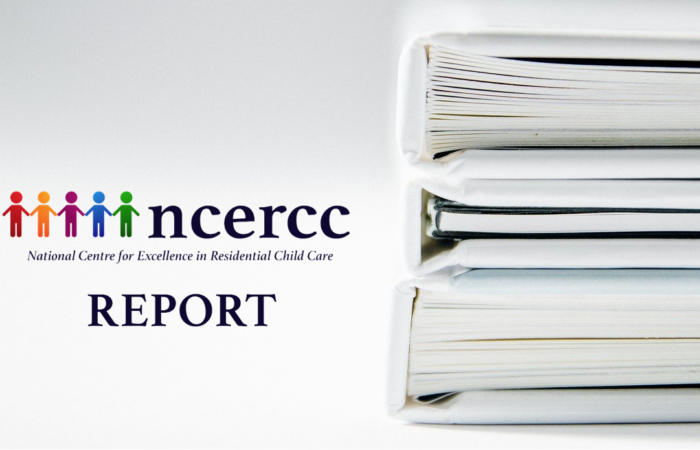
No one can say they didn’t know … the commissioning of Hope (Part II)
For the past ten years and more NCERCC, often with a small number of notable consistent others, has been researching, analysing, explaining the ownership pattern (and comparative costs) of children’s homes in England.
We have been consistent in asserting that it is a choice as to the ownership density; a choice for government to set policy, a choice for local government with its dual purchaser (setting terms and conditions in frameworks to enable small providers) and provider role ( we have consistently said that if local authorities want to have more of their own homes it is a choice), and providers choosing to be smaller and larger (and if smaller are to resist the larger they need to federate together).
For some years I was the chair of the NCCTC conference (National Commissioning and Contracting Training Conference). This 2-day annual conference brings together ministers, government officials, local government leaders and commissioners, providers from voluntary organisations and private sector, researchers.
At the 2015 conference I made the opening remarks with my focus being the commissioning of Hope.
NCCTC 2016 Chairs introductory remarks
The commissioning of Hope
Amongst all the pursuit of the ‘hard targets’, for example, value for money and outcomes based working, it is often other connected features that go to ensure effective contractual relationships, particularly mutual respect and collaboration, that go to make up the advantages that come with Trust and Good Faith
In these days of austerity we need to hold firmly our essential ability with what are called ‘soft skills’. The harmony and stability, the ‘felt security’ in the relationship between commissioner and provider can be a large factor in the child-centredness that is possible to be experienced by the young person.
In opening the conference I want to make some remarks about Hope, Holding and Being Understood.
Facing this next year it is crucial that we all feel Hopeful.
We cannot allow ourselves to be confronted by ‘the felt loss of a future’.
This positive view of the future comes from being Hopeful.
Authentic Hope needs to be underpinned by reasons; it must be credible.
The archaic definition of Hope in the OED is a ‘feeling of trust.’ An active commitment to the desirability and realisation of a certain end.
Hope need not involve the probable; it does hinge on the possible.
Hope must intend the possible. It must be reasonable.
How can we have Hope?
Firstly, by not being optimistic. In the current situation we need more than Optimism, we need Hope. They are not the same.
An optimist is not someone with high Hope, there must be reasons to be hopeful. Optimism is a choice; Hope has an objective basis. Though optimism sees the shortcomings of the current situation it looks to a positive future. Optimism can be cosmetic, disavowing reality it can lead us away from the discussions we must have.
Hope requires that we are able to confess the gravity of the situation, which leads me to the second element.
Secondly, by being rooted in reality.
A great deal is objectively at stake as a result of the decisions we take in the next year.
Hope requires reflection, an audacious openness to the unvarnished truth that is difficult to attain, and more so to sustain.
Having Hope is a sign that the unpalatable has already happened.
Recognition of this is arduous work, acting upon it more so. It is our responsibility not to insist that all is well when it self-evidently isn’t.
We are all involved in doing something that no other group of people has had to do before, that is seeking to manage children’s care, which has always been a generalised scarcity, in a wider declining economic situation.
We have to discuss the bounds of the possible, register the demands placed on others and their incompatibility with those placed on you.
How do we know what will be good or injurious?
By dialogue. By co-production.
There is no off the peg Hope.
We must all lose for us all to win.
We have to face the necessary depth the divisions and contradictions which we now inhabit and find ways to melt them so that we are together single-minded.
It may well be that we have to break with what we do now for a successful future outcome.
We need to act with lucidity, foresight, calculation, and precision, this is being Hopeful.
The foundation of Hope is the knowledge that you will not be abandoned. You cannot act hopefully if you regard it as hopeless. Hope requires there to be the policy and practice of accomplishment.
Optimism would be to act with nameless or shapeless randomness, without an objective basis to our analysis and actions.
There might be good reasons to be expecting things to turn out well but doing so because you are an optimist is not one of them.
Child care change is incremental, not of radical rapid change but of small extensions. We add learning to other learning, we rarely can unlearn overnight. We have to beware any destabilisation before we get to fertile new territory. At the moment many of us are concentrating on survival.
Hope is always connected to progress, and often to survival.
We need to look to those who come after us not only for ourselves today.
What is the inheritance that we will be passing along? How are we strategically ensuring we will pass along the best?
Hope is not utopian it is performative.
Hope is realisation of the potential that is in the present, the possibility of fulfilling the potential we know to exist. We have the people in the room who can undertake this task. We are counting on each other, we have Hope in someone.
As Raymond Williams in 1960 (so this isn’t a totality novel situation) observed, ‘We have to plan what we can plan according to our common decision… ensure the means of life, and the means of community’.
The commissioning of Holding – primary caring preoccupation
If we look at what we’ve produced and published together over the past years we see we have predominantly focused on the administrative and transactional and much less on the personal dimensions, such as the psychology and relationships and much less on the responsibilities, both legal and personal, such as the parenting aspects of commissioning that are there as a result of child care legislation, such as parental responsibility and corporate parenting.
It is an omission we have to redress.
The care of a child takes place by a primary carer but within an environment. Commissioning is to do with both aspects. It is the commissioning of the appropriate environment that enables the primary relationship, or not.
There is an absolute dependence of the primary care relationship on the commissioned environment. Commissioning is inextricably related to the care that is given is for example the ability of the primary carer to be able to respond to the behaviour of the young person as a communication.
The centre of our focus has been on the child and provider and less on the total set up. (sic Winnicott 1953 Through paediatrics to psychoanalysis p99).
If in commissioning we shut our eyes or otherwise separate ourselves from this understanding then we are misunderstanding what is actually and observably going on.
In fact it may be that the writers of the Children Act knew this in 1989, 25 years ago we had this in legislation and have yet to act upon it to the degree they saw necessary to promote the care and welfare of a young person.
I’m thinking here of ‘the most appropriate placement’, that principle that is there in the Children Act, that is a requirement of commissioning. If we think about this psychologically and in a parental way this translates as the provision of ‘primary parental preoccupation’, a heightened sensitivity for a young person. At the time of the writing of the Children Act this was given high priority. This primary preoccupation was to be respected and protected. Learning from that time and projecting to this time – what is that we are about?
Another way of looking at it is that the primary carer holds the child, psychologically and emotionally, and the commissioning relationship contains it by ensuring the healthiness of it.
If the child is dependent on the primary carer then they are dependent on the commissioner to create an environment that can fulfil potential or not.
What is needed is a focus on the commissioning of the ‘good-enough environment.’ This would ensure continuity of care leading to continuity of being for the young person without stress or interruption.
There are three aspects; the holding is brought about by than handling (of arrangements) and object presenting.
These as Winnicott observed need to be reliable, protective, sensitive in order that the primary care of the child is ‘ …enabled to do better by being cared for themselves in a way that acknowledges the essential nature of the task. He goes on ‘… (those) who do not have it in them to provide good-enough care cannot be made good-enough by mere instruction.’ (Winnicott 1960 The facilitating environment and the maturational environment). We might interpret this for commissioning as offering us a view that commissioning is important as a determining factor of that to which it directly related, but that commissioning in itself, no matter the specifications, or outcomes frameworks is never enough, the contractual and transactional are not the end of the story, they are part of a continuing story. In story terms they are the structure whilst the caring is the narrative.
To reimagine some words by Joyce MacDougall the way arrangements are handled is as significant as the caring.
The carer needs to feel that they are able to care for the young person in the way that is needed and that their care is that which is needed, it is a an ‘appropriate’ match, and that their practice is theirs rather than one that is imposed from outside of the primary care relationship. They must be living in the house of their own practice not renting a short term let in another’s house.
Hope is to be found in the young person’s expectation of care being met also being mirrored in the providers’ expectation of arrangements that will be enabled by the commissioning and contractual arrangements. Each is a necessary part and related to the others. It is not one or the others that create the care but all, in dialogue.
Care is a process rather than a product. The creation of a care is a joint endeavour. It cannot be imposed by another. It requires dialogue. It cannot be right at the start, it emerges.
Being understood
Commissioning requires we are each ‘understood.’ What we do and why we do it, our practice, our roles in relation to each other and the child who is our preoccupation. It is this aspect of commissioning relationships that maybe we have not cultivated as well as we could have done.
I hope that you will feel supported by each other enough and leave feeling that you have evidence that you have been able to make yourself understood.
So, the challenge to us all, not just for the end of the conference but also at the end of each week, month.
‘What have I done to increase the experience of Hope in commissioning?’

